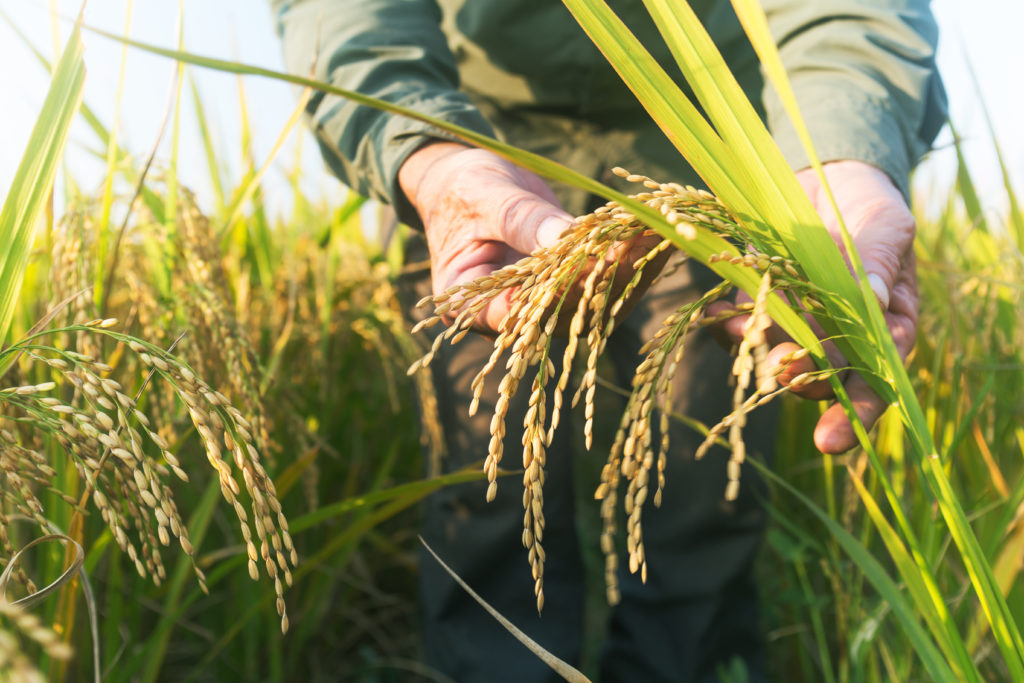Food and Agriculture
Nuclear technology plays several roles in improving crop yields, preventing spoilage and making our food safer.
Food irradiation
Food irradiation involves exposing food to ionizing radiation, which destroys insects, bacteria and microbes. CANDU reactors in Ontario produce cobalt-60, the source of radiation for preserving food.
In addition to making food safer by killing organisms that carry diseases, food irradiation extends the shelf life of food, as it destroys the microbes that cause spoilage. And it slows ripening and sprouting processes in root vegetables. It also enables international trade in produce because it ensures that insects are not transported across borders.
Irradiating food — also known as cold pasteurizing — doesn’t make the food radioactive. The radiation kills pests and parasites, so the irradiated food is safe to eat. The World Health Organization, the United Nations Food and Agricultural Organization, and the International Atomic Energy Agency have reviewed accumulated data from about 50 years of research. They found that irradiated food is as safe as food preserved with other techniques, such as freezing or canning, and that the nutritional value is similar.
Today, more than 55 countries have approved food irradiation as a reliable way of improving the shelf life of food. One of the global leaders in the field is Nordion (Canada) Inc., which has built many of the food irradiation installations worldwide.

Agricultural applications
Over the years, agricultural researchers have developed numerous applications for irradiation. Specifically, crop irradiation:
- improves the nutritional value of some crops;
- improves the baking or melting qualities, or reduces the cooking time of some foods;
- shows how plants absorb nutrients, helping researchers learn when to apply fertilizer and how much to use; and
- sterilizes the eggs or the males of species of harmful insects so that no offspring are produced, effectively controlling the population.
Crop irradiation has proven to be effective, safe and environmentally friendly. It releases no chemical, biological or radioactive agents into the environment. It has enabled farmers to limit the use of fertilizers, which helps preserve water supplies, saves energy costs from pumping and prevents runoff of potential contaminants into streams and rivers.
The International Atomic Energy Agency (IAEA) estimates that by suppressing insect pest populations with the sterile insect technique, pesticide use worldwide has been reduced by 600,000 litres annually. Since 2006, the insect pest control program has generated benefits to farmers of more than $100 million and created thousands of rural jobs.
The IAEA Plant Breeding and Genetics Section also uses irradiation to develop hundreds of varieties of hardier, more disease-resistant crops, including peanuts, tomatoes, onions, rice, soybeans and barley.
Nutrition
Nuclear technology has far-reaching effects on our food and agriculture, improving crop varieties, prolonging shelf life, and destroying pests and parasites. This makes our food healthier and more appetizing.
Additionally, nuclear technology helps fight against two nutrition-related issues: malnourishment and obesity.
- Despite the agricultural revolution of the 20th century, malnutrition continues to affect many people. According to the World Health Organization (WHO), almost 500 million adults are underweight, while malnutrition accounts for about 45 per cent of deaths in children under five, mainly in developing countries. Even when food is abundant, people might not get enough of a particular vitamin or mineral.
- Obesity is the opposite issue, but no less serious. The WHO estimates that obesity has tripled since 1975, with almost two billion adults being overweight, with 650 million being obese. In addition to social stigma, these individuals face elevated risks of heart disease, stroke, diabetes and some cancers.
In both cases, an accurate reading of body composition is essential. A technique called deuterium dilution helps to determine the percentage of fat versus fat-free mass. With this technique, the patient drinks water with deuterium. This can be traced in bodily fluids, which scientists believe give a more accurate reading of body-mass index than conventional methods do. In turn, this can inform healthier dietary choices.

